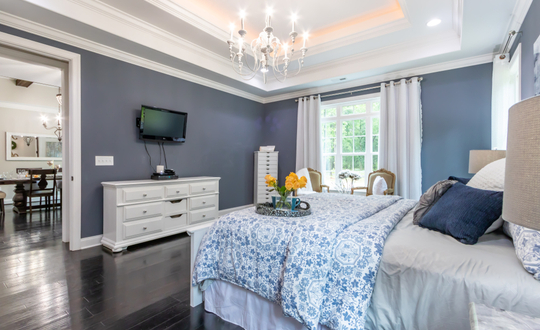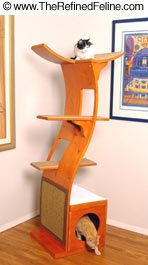Fabulous design. Cutting edge looks. Interesting twists in color, fabric, and texture. These are all elements inherent in design that's ecologically sound. Yes, your creativity can have free reign even as you make choices that help protect the planet. Increasingly, manufacturers are creating products that have minimal impact on the environment, whether because they're made from organically-grown cotton or because they're made with renewable resources. We think environmentally friendly design is so important that we recently added a Green Design lesson to the NYIAD Complete Course in Interior Design.
In our "Decorating Green" column we'll look at a sustainable, low-impact element of design in each issue of "Designer Monthly." We hope these articles will help us all help the planet and the many creatures that share it with us.
In the past five years, there's been a surge of interest in Green Design, so that building an environmentally friendly house or decorating a home in ways that do minimal damage to the planet is increasingly becoming standard fare. We've learned about low-VOC paints, about sustainably-harvested woods, about using local products that don't need to be shipped.
But what about style?
Often, when thinking about green design, we think of modernism, Zen, and an Asian look. The clean lines of these styles, the spare, simple look, the minimalism, all seem to speak to green design. It seems, at first glance, that the less furniture you have, the less impact you're having on the environment, and therefore minimalism = green, or, in other words, less is more environmentally correct.
And that's true, and having a green home is just about the most contemporary thing you can do in the 21st century. After all, back in the day, we were building energy-eating McMansions, or importing furniture made from ancient hardwoods, and that just isn't the contemporary way anymore.
But another take on contemporary design that is also green design is to think of the “three R's” — Reduce, Re-use, Recycle. This principle is most often applied to our intimate relationship with trash, the idea being to cut down on packaging, to re-use everything from water bottles to mayonaise jars, and to recycle whatever is left.
This can also apply to home décor, and with sometimes stunning results. By reducing the amount of new stuff we buy, we're reducing our use of precious fuel both to manufacture new goods and to ship them. And the way to do this in home decorating is by re-using and recycling.
Many of the styles you see in the popular designer stores are a blend of styles from ages past, dipping into modernism here, colonial there. To achieve this eclectic, contemporary look, there's nothing that says you need to buy a newly-manufactured desk lamp or a recently-created “distressed” wood table when you can find a perfectly good hand-me-down and re-work it yourself into something up-to-the-minute.
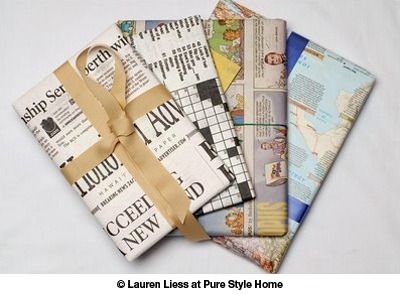
Granted, this takes some work, and some patience. But few people complain about spending a Saturday browsing antique stores or going yard-sale hopping. And taking this approach of finding what you need will give your home your own unique stamp, rather than having it look like a catalogue showroom.
Of course it doesn't hurt to bring a designer's eye to the pieces at hand. We browsed around online and found that the work of Lauren Leiss at The Pure Style exemplifies this take on green design and re-purposing.
Lauren has a real flair for the re-use game. Anyone else wrapping a gift in newspaper might be given the bum's rush at the door of the birthday party, but these gifts look are cleverly wrapped in a darling presentation that belies their origins.
And we love this idea, also featured on her blog, purestylehome.blogspot.com, of creating a collection of all-white statuettes. These hippo before and after photos tell the whole story, and you can see how a coat of white paint would jazz up an otherwise ordinary (or, face it, ugly) knick-knack.
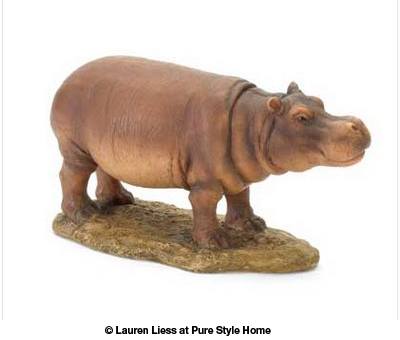
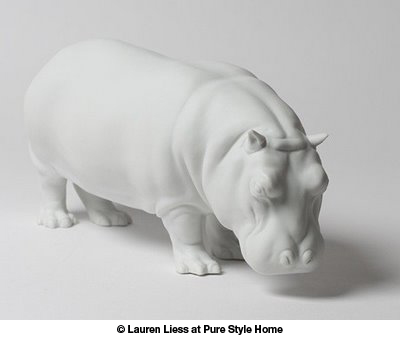
“Using recylced materials in decorating helps you think outside the box. And it's a huge the benefit for the environment & your wallet,” Leiss said.
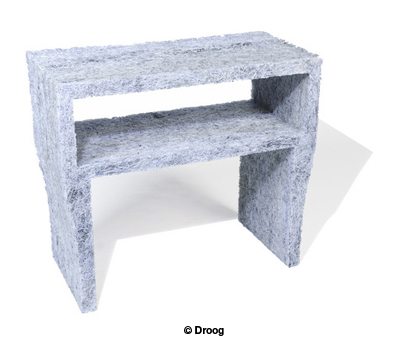
And then there are the designers who are creating real works of are from, well, to put it nicely, trash. We love this table, designed by Jens Praet and sold through Droog, which is made out of just one day's worth of paper waste. Praet made it from confidential shredded paper, mixed with resin, compressed, shaped, and voila — a table on which to work so you can create more paper waste.
The idea of recycling and re-using items, from dining tables to salt shakers, allows you to let your creativity run wild, whether it's by stenciling a funky design on a dresser or finding a new life for planters. Make a picture frame from cast-off wood; piece together a throw pillow from your favorite worn-out cotton shirts. The sky and your imagination are the limit, and you'll be saving the earth the burden of reinvention.
For more on this, see our Room of the Month, which focuses on a small house done entirely with re-used and re-cycled furnishings.


